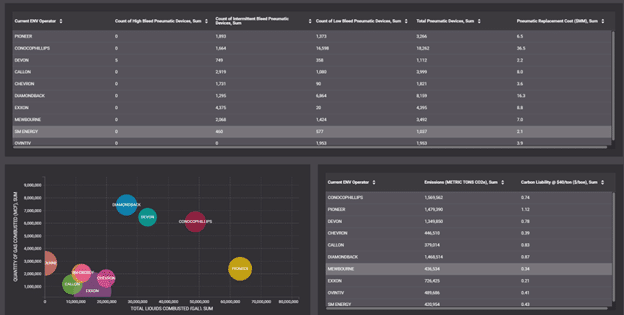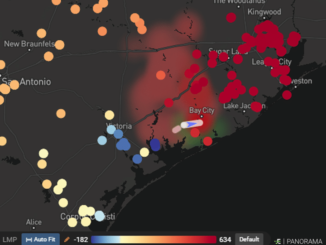
Just two years ago, the environmental, social and governance (ESG) conversation was nascent, with general uncertainty as to its staying power. The E in ESG and, more specifically, emissions in the energy value chain have risen to the top of investor concerns. Wall Street and energy companies are now much more focused on ways to measure, monitor and monetize emissions reduction.
These early days for ESG in energy are characterized by a hyperfocus on Scope 1 emissions reduction, where producers are taking action to minimize greenhouse gas (GHG) sources that they directly control or own, including methane and CO2. At the same time, the ESG conversation appears to be unstoppable as public sentiment, investors, government policy and energy companies work out the details of where to prioritize Scope 1.
Tuned into the pulse of the emissions conversation across thousands of investors, energy executives and oilfield services, Enverus is uniquely positioned to provide market participants with a clear view into the current ESG landscape and emerging themes. Leveraging Enverus ESG Analytics, investors gain unprecedented data analysis and visualization capabilities to benchmark operator ESG on multiple dimensions, reveal future emissions reduction potential, assess upside opportunities and navigate risks.
Read on for an analysis of current ESG trends in the energy sector and the roadmap for enriching ESG analysis with new datasets and technology.
ESG themes in the energy sector
More than 70 countries have set a net-zero target, which has a large-scale ripple effect across the global carbon footprint, carbon markets and investor portfolios. There is a clear and consistent global emissions alignment that is driving ESG improvement in U.S. basins.
For the financial sector, this alignment is best seen in the consensus among investors on the crucial role of ESG to drive climate improvement and environmentally responsible portfolio decisions. This consensus has taken the form of the UN’s Principles for Responsible Investments, representing $120 trillion of assets under management across 4,000 firms. Such initiatives also include the Climate Action 100, an investor-led coalition that aims to elevate scrutiny of corporate GHG emissions and take ESG into consideration when allocating capital. And while the recent proposed SEC rules effectively make GHG disclosures voluntary for producers, this is only the first salvo of ESG-related rules that, at a minimum, require energy companies to disclose emissions that have a material impact on their operations.
Alignment on ESG is also demonstrated in the ways it is being monetized, such as the European Union’s Carbon Credit Trading System. Although carbon trading is voluntary in the U.S., new markets are opening around the fringe of emissions control, including responsibly sourced gas (RSG). Gas producers are rushing to obtain RSG certification because it assures natural gas buyers and investors that the commodity has been produced and transported along certified, low-GHG pathways. Enverus expects the RSG market will double in the coming year to 20 Bcf.
Global emissions alignment is most notable in the energy industry’s response to the ESG conversation over the last year. To qualify for RSG certifications, producers are retrofitting with new equipment that tracks GHG emissions and aligns with the industry’s hyperfocus on Scope 1 reduction.
Leading indicators of emissions improvement can be seen in corporate reports from energy companies, most of which have an explicit ESG mention. Growing support for ESG is also evidenced by budget line items that are allocated to emissions reduction. Energy companies are now spending tens of millions to reduce 1 million metric tons of CO2, which is equivalent to approximately $10 of various abatement costs per ton, or about one voluntary credit in today’s market.
No doubt, there is global alignment on reducing oilfield GHG emissions that is starkly juxtaposed with a revitalized and growing understanding that hydrocarbons are still crucial to our way of life as evidenced by strong global demand and record high commodity pricing. The focus is shifting away from an all-or-nothing energy transition to renewables to one of maintaining hydrocarbons’ crucial status in a broader energy mix. As such, the focus is now on rapid supply chain optimization, especially as many countries look to replace Russian oil and natural gas.
In today’s market, energy companies that take the right steps will be rewarded by Wall Street as long as investors have the justification to return capital to the best-in-class operators based on free cash flow, shareholder value and environmental stewardship.
Energy companies and market participants need reliable ESG data to track and meet emissions goals, ensure sound capital allocation and de-risk decisions. Until now, there has been a lack of clarity and universal standards regarding emissions data, limiting analysis and timely decision making.
With a focus on improving ESG data resolution as public data sets, direct-measure data and new technologies come online, Enverus ESG Analytics reduces ambiguity and clarifies oilfield emissions. ESG Analytics pulls in all the best available data, then standardizes and transforms it into useful layers within PRISM. Users can then easily incorporate analytics-ready ESG data into powerful workflows to pinpoint opportunities and risks in context with other PRISM workflows and category-leading Enverus data sets.
Source | Enverus
ESG Analytics: What’s on the horizon?
ESG Analytics is evolving alongside today’s industry and ESG focus. Enverus continues to stay several steps ahead of the trends and technologies that are influencing the market.
Several advancements are coming soon to ESG Analytics, including carbon capture breakeven, a facilities-level emissions data set and ESG events that will combine direct-measure sources with public GHG data.
More than oil and gas, ESG Analytics covers all emissions in the energy sector and extends beyond emissions. Water stewardship is an increasing focus for the environmental dimension of ESG.
ESG Analytics is not just focused on the E in ESG; our data and analytics platform also provide a growing wealth of data for social and governance. This is especially important as socially responsible sources of hydrocarbons open a new front in the market.
Equipped with ESG Analytics and PRISM’s cloud-based workflows, teams gain clear visibility into ESG with intuitive technology that enables you to interrogate data and get rapid answers. Reliable, decision-ready analytics are just a few clicks away, powering unmatched ESG insights that enable you to confidently pinpoint opportunities and de-risk portfolios.
You can learn more about ESG analytics here.
The post Shifting to the ESG Mindset first appeared on Enverus.



